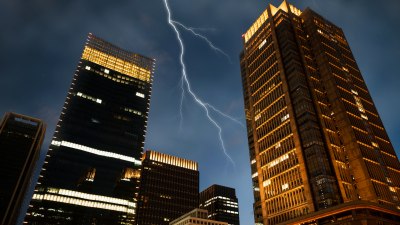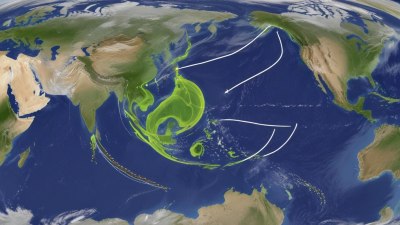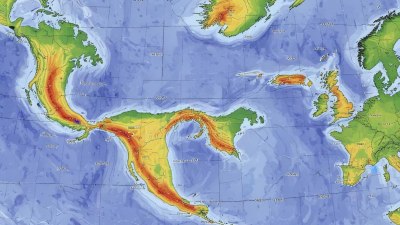Why Some Cities Get Hit by More Lightning Than Others
Discover the factors influencing lightning frequency in cities around the world.

Lightning is one of nature's most fascinating phenomena. While it can occur anywhere, certain cities experience far more lightning strikes than others. Understanding why this is the case involves examining various geographical, meteorological, and climatic factors that contribute to the formation and occurrence of thunderstorms. This article explores the reasons behind the different frequencies of lightning strikes in various urban areas, providing insights into how local conditions create environments conducive to electrical discharges.
Geographical Factors
One major reason that some cities get hit by more lightning is their geographical location. Areas situated near the equator tend to experience higher frequencies of thunderstorms, which are the primary source of lightning strikes. For example, cities like Kampala in Uganda and Quito in Ecuador experience significant thunderstorms year-round due to their tropical rainforest climates. In these areas, the warm temperatures and high humidity create ideal conditions for the development of towering cumulonimbus clouds responsible for producing lightning.
Moreover, cities located in regions where warm, moist air converges with cooler air often see an increase in lightning strikes. The collision between these air masses leads to the formation of storms that bring about electrical activity. For instance, cities in the southeastern United States, such as Orlando and Miami, experience frequent thunderstorms due to the warm, humid air from the Atlantic Ocean meeting cooler air from the north. This geographical positioning contributes significantly to their high lightning frequency.
Climatic Influences
The climate of a region plays a critical role in determining how often lightning strikes an area. Regions characterized by a tropical or subtropical climate generally witness more thunderstorms due to the persistent warmth and moisture. In contrast, arid or desert regions tend to have fewer thunderstorms and thus experience less lightning activity. For example, Las Vegas, Nevada, with its desert climate, averages only about 5-6 thunderstorms per year, highlighting how climate affects lightning occurrence.
Additionally, seasonal variations influence lightning frequency. In temperate regions, summer months often bring an increase in thunderstorms, as higher temperatures lead to more intense convection, creating conditions for lightning. Conversely, during winter months, many areas experience a drop in thunderstorm activity, resulting in fewer lightning strikes.
Topographic Features
Topography also plays a crucial role in amplifying lightning activity in certain cities. Areas with significant elevation, such as mountainous regions, can enhance the development of storms as moist air rises to higher altitudes, cooling and condensing into clouds. This process often leads to an increase in both precipitation and lightning. Cities located near mountain ranges, like Denver, Colorado, frequently experience thunderstorms due to orographic lifting, which contributes to their higher lightning strikes.
Conversely, flat plains may see less lightning due to the lack of elevation to aid in cloud formation. However, when conditions are right, such as during the summer, thunderstorms can develop over these plains, leading to occasional high lightning frequencies. Understanding how topography influences storm development can illuminate why some cities become lightning hotspots.
Local Meteorological Patterns
The interplay of local meteorological patterns can significantly affect lightning frequency. For instance, regions under the influence of prevailing wind patterns can dictate when and where thunderstorms will form. A city situated in a convergence zone—where winds from different directions meet—may experience heightened storm activity and, consequently, more lightning strikes. Cities like St. Louis and Kansas City, located in areas where the Gulf of Mexico's warm air meets cooler air from Canada, see frequent lightning due to this phenomenon.
In addition, phenomena like the El Niño Southern Oscillation (ENSO) can alter weather patterns across entire regions. During El Niño years, some areas can become prone to increased thunderstorm activity, raising the likelihood of lightning. This interannual variability can lead to fluctuations in lightning frequencies from year to year, affecting cities differently based on their location and associated climate.
Urban Heat Island Effect
The Urban Heat Island (UHI) effect also plays a role in influencing lightning frequencies. Urbanized areas tend to be warmer than their rural surroundings due to human activities, buildings, and infrastructure that absorb and retain heat. This increase in temperature can lead to enhanced convection and the formation of clouds, which may result in increased thunderstorms and lightning strikes in cities. Cities like New York and Los Angeles might experience more frequent lightning events compared to their surrounding rural areas due to the UHI effect.
As cities grow and populations increase, the impact of UHI on local weather patterns may become more pronounced, potentially leading to changes in lightning frequency over time. Urban planners and meteorologists must consider these implications while assessing weather risks in growing metropolitan areas.
Long-term Data and Studies
To fully understand lightning trends in various cities, researchers often rely on long-term data collection and studies. Meteorological organizations compile extensive databases of lightning occurrences, weather patterns, and climatic conditions. By analyzing this data, scientists can identify correlations and patterns, leading to improved forecasting tools and risk assessments.
For example, studies have shown that certain regions in the United States, such as Florida, experience lightning strikes at a rate significantly higher than the national average due to the combination of geographic and climatic factors. In contrast, northern states with short summers and less humidity, like North Dakota, exhibit much lower rates of lightning strikes. These findings highlight the variability in lightning frequency and the importance of localized studies to understand the phenomenon.
The Dangers and Precautions
With the increased frequency of lightning strikes in certain cities comes the heightened risk of associated dangers, such as property damage, injuries, and fatalities. Lightning can strike buildings, vehicles, and people, causing fires, electrical malfunctions, and severe injuries. It is crucial for residents of lightning-prone cities to be aware of safety measures during storms, such as seeking shelter indoors, avoiding open fields, and steering clear of tall structures.
Local governments and organizations often provide resources and guidelines to help communities prepare for severe weather, including lightning storms. Public awareness campaigns can emphasize the need for emergency preparedness, particularly in areas with higher lightning frequencies, to reduce the risks posed by this dangerous weather phenomenon.
Ultimately, the reasons why some cities are hit by more lightning than others are multifaceted, involving a blend of geographical, climatic, and meteorological influences. In-depth understanding of these factors is essential for making informed decisions regarding safety and infrastructure. As climate change continues to impact weather patterns globally, the frequency and intensity of lightning events may evolve, necessitating ongoing research and adaptation to mitigate risks.
By exploring the intricate relationship between cities and lightning, we gain valuable insights into one of nature's most dramatic displays, enhancing our ability to coexist with this powerful element of weather.











